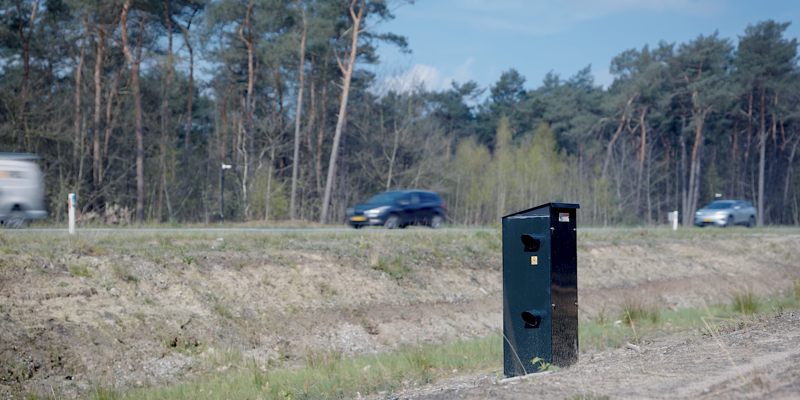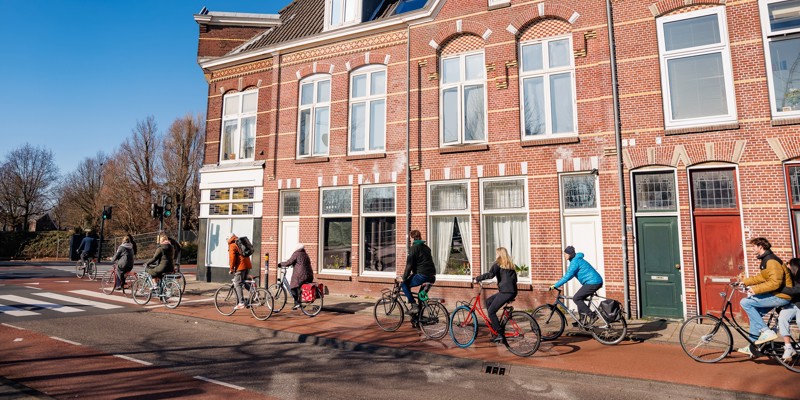
This has to change, because urbanisation means that the number of logistical movements is rising exponentially and on top of that comes all the construction traffic. All that traffic creates traffic jams on the way to and within the city, as well as noise pollution, CO2 emissions and air pollution. There is a smarter way of doing this! That is why the municipality of Eindhoven has given the green light for a VolkerWessels Materieel & Logistiek (VWML) Construction Hub.
Smarter and cleaner
Sten Camps from SmartwayZ.NL (mobility programme in the south of the Netherlands) explains, "Logistics is causing lots of CO2 emissions in our towns and cities. The air in the Netherlands has to become cleaner and we have to meet the climate agreement targets. One of the ways we can do this is by establishing zero emission zones in at least 30 of the country's larger towns and cities. Eindhoven has signed up to the scheme and this means that new vans and lorries must be emission-free in 2025. In 2030 the same will apply to all logistical traffic. Eindhoven wants the Construction Hub to lead to fewer movements and therefore lower CO2 emissions and improved accessibility. SmartwayZ.NL is supporting the municipality with knowledge and advice during the Construction Hub project. By doing so we are carrying out one of our core tasks, namely the practical implementation of smart logistical applications in the south of the Netherlands."
The best logistical sequence
The Construction Hub is certainly smart. "The idea for the Construction Hub came about when VolkerWessels wanted to start building a home each day based on a new residential construction concept (MorgenWonen)", explains VWML Building Logistics Coordinator Sebastian Hegeman. "For us as equipment suppliers it was the perfect opportunity to demonstrate the effect of good logistics. We analysed the entire construction process and translated it into the best possible logistics sequence. We then did the same for a major construction project in Utrecht where the benefits were even more evident. That was when the first Construction Hub for inner-city construction logistics was set up. This enabled us to reduce the number of movements into town by 69%, the load factor increased from 40% to 90%, nitrogen and CO2 emissions went down by 68% and labour productivity rose by 39%."
Everyone benefits
Sten continues, "The results from Utrecht show how well a Construction Hub works. First and foremost because it can be used to control the supply of large-scale materials required for the structural stage. That prevents waiting times and traffic jams due to hold-ups at the construction site entrance. During the fitting-out stage the Construction Hub is used to collect materials from various suppliers and deliver them together to the site in daily production packages. Exactly on time and in the required quantities. Lastly, the Construction Hub acts as a meeting point for construction workers and that avoids having hundreds of minivans in the centre of town. It is a win-win situation for all the parties involved. VWML is paid for providing logistical services, construction workers can work more efficiently, there are fewer incidents of damage at the construction site, construction time is reduced and there are fewer logistical movements. It also means less nuisance for the city, improved accessibility and cleaner air. In other words, improved livability."
Talent development and circularity
"What is more, the Construction Hub is a response to developments on the labour market. Construction specialists are becoming ever scarcer and are generally more expensive than logistics staff. Logistics employees at the Construction Hub place the items required for the fitting-out stage, such as a new kitchen, on the right floor and unpack them. This means the kitchen fitter can get straight down to work and that saves time and money. It is even better if people who are distanced from the labour market are able to carry out the logistics work.", according to Sten. Sebastian agrees, "This Construction Hub requires a different way of thinking and you can achieve this more quickly if lots of parties benefit. That is why we are collaborating with the TalentHub at Level5, our partner in the field of social return. Via de Construction Hub you can enable people to develop their talents and reintegrate into the employment process. That gives them opportunities and provides new labour for the industry. We also share resources with our partners in order to find a smart way into town and out again. Circularity plays a key role in this and we continually ask ourselves what value of materials can we keep in the region?"
Smart cooperation
The Construction Hub is a 'white label' concept. This means that all parties, both constructors and suppliers, can use the logistical services and open data. Sten adds, "SmartwayZ.NL has a great deal of knowledge about sharing data between government bodies and private logistics operators. Which data is needed, who is allowed to use it and how do you share it in real time? We are developing a process, including tools, to gain an insight into the effects of the Construction Hub, including the number of reduced journeys per constructor. The municipality needs proof in order to work towards reductions. Sharing data will mean certain privileges can also be given to construction traffic that passes through the Construction Hub, for example priority at smart traffic lights. In this way a smart project in which there are only winners will produce even more winners. That's a fantastic goal for all of us to be working on."
This article was published in Polis Magazine on June 8, 2021. This article is collaboration of SmartwayZ.NL and VolkerWessels Materieel & Logistiek.





